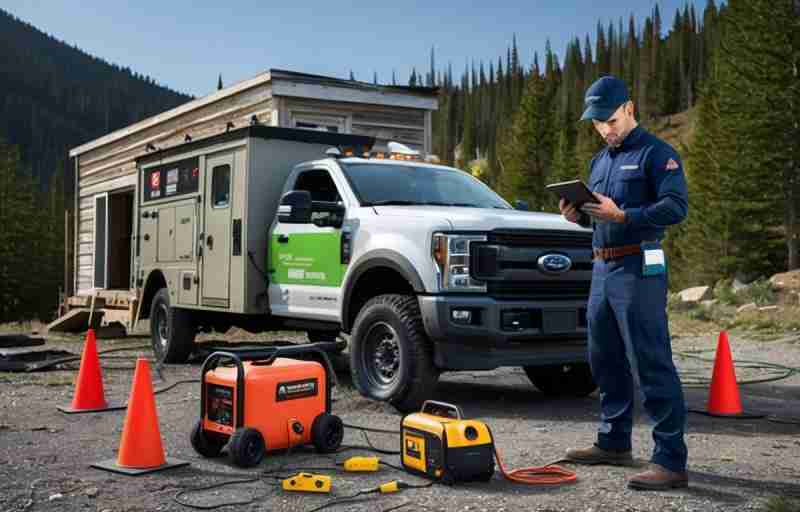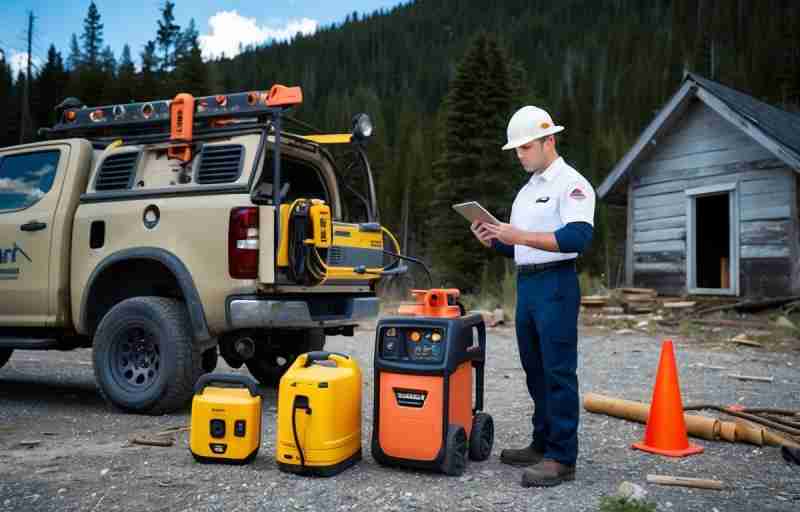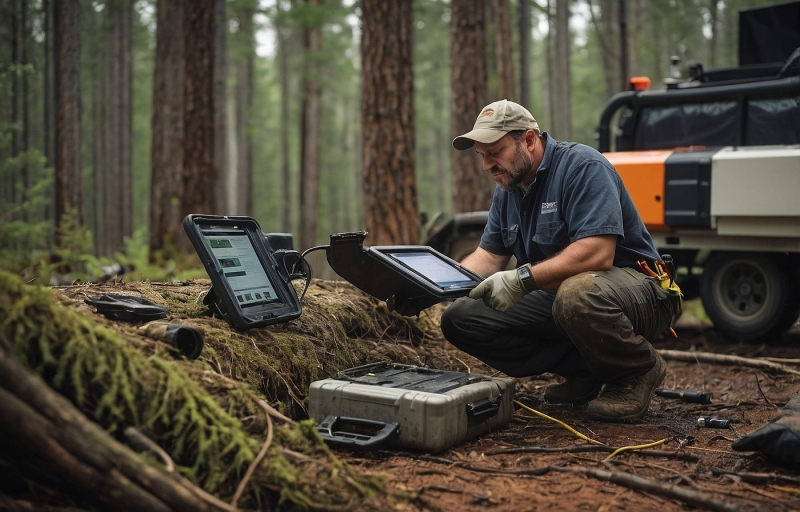Restoration projects in remote areas come with their own unique set of challenges, from limited access to specialized equipment to unpredictable weather conditions. Whether you’re dealing with water damage or fire damage, having a strategic plan in place is essential for successful recovery. At COMMITTED TO QUALITY SERVICE, we understand the importance of fast, friendly, and professional service—no matter where you are. Our expert team is equipped with advanced tools designed specifically for water damage restoration and fire damage mitigation, ensuring that even the most isolated locations receive top-tier care. If you’re looking for practical tips for managing restoration in remote areas, you’re in the right place. We’ll guide you through proven strategies to overcome logistical hurdles, maintain safety standards, and restore properties efficiently. Call us now at 855-933-7935 to learn more about how we can help you navigate restoration challenges with confidence.
Assessing the Site and Understanding Local Conditions
Before initiating any restoration project in a remote area, it’s crucial to thoroughly evaluate the site and understand the local environmental, logistical, and infrastructural conditions. This foundational step ensures that the project is not only feasible but also sustainable in the long term. Remote locations often present unique challenges such as limited access to utilities, unpredictable weather patterns, and restricted transportation routes.
“According to the U.S. Environmental Protection Agency (EPA), understanding site-specific conditions is essential for effective environmental restoration and risk management.”
Start by conducting a comprehensive site assessment that includes soil testing, water quality analysis, and structural evaluations. This helps identify potential hazards and informs the selection of appropriate restoration techniques. Engaging with local communities and authorities can also provide valuable insights into historical land use and environmental concerns.
- Use satellite imagery and GIS tools to map terrain and access points.
- Consult with local experts or environmental consultants for region-specific advice.
- Review historical weather data to anticipate seasonal challenges.
For example, in wildfire-prone areas, understanding wind patterns and vegetation types is critical for effective fire damage restoration. Similarly, in flood-prone zones, assessing drainage systems and water tables is vital for successful water damage mitigation.
To learn more about our approach and the services we offer, visit our services page or explore our about section. For further reading on early detection strategies, check out our guide on how to identify hidden water damage early.
For additional resources on environmental site assessments, visit the EPA’s official site.
Building a Reliable Local Team

Establishing a dependable local team is essential when managing restoration projects in remote areas. A strong local workforce ensures faster response times, better understanding of regional challenges, and improved communication throughout the project. Start by identifying skilled professionals who are familiar with the specific restoration needs of the area, such as water, fire, or mold damage. Partnering with local contractors and technicians not only supports the community but also helps streamline logistics and reduce costs.
Training and clear communication are key to maintaining consistency and quality. Provide your team with detailed guidelines and ensure they are well-versed in safety protocols and restoration standards. Regular check-ins and updates can help address any issues early and keep the project on track.
Additionally, building relationships with local suppliers and service providers can enhance efficiency and ensure timely access to necessary materials and equipment. For more insight into the types of restoration services that may be required, explore our comprehensive services page.
Understanding the local environment and potential hazards is also crucial. Whether dealing with water intrusion or fire aftermath, having a team that knows the terrain and climate can make a significant difference. Learn more about our mission and commitment to quality restoration by visiting our our mission page. A reliable local team is the foundation of successful restoration in remote locations.
Ensuring Efficient Transportation and Logistics

When managing restoration projects in remote areas, one of the most critical factors for success is establishing efficient transportation and logistics. Remote locations often lack direct access to major roads or supply hubs, making it essential to plan routes, delivery schedules, and equipment transport in advance. Coordinating with local suppliers and utilizing GPS tracking can help streamline operations and reduce delays.
Proper logistics ensure that restoration teams have timely access to essential materials, tools, and personnel. This is particularly important in emergency situations like water damage or fire recovery, where time-sensitive responses can prevent further property deterioration. Partnering with experienced logistics providers familiar with rural or hard-to-reach areas can also enhance efficiency and reduce operational costs.
Additionally, having a contingency plan for unexpected weather conditions or road closures is vital. Restoration companies should invest in durable vehicles and equipment capable of handling rugged terrain. For more insights into how we manage complex projects, visit our services page.
By prioritizing transportation and logistics, restoration professionals can maintain project timelines, ensure safety, and deliver high-quality results even in the most isolated regions. To learn more about our approach and the areas we serve, check out our serving areas page.
Utilizing Technology for Remote Monitoring
In remote restoration projects, leveraging modern technology is essential for effective oversight and timely decision-making. Remote monitoring tools, such as drones, IoT sensors, and cloud-based project management platforms, allow restoration teams to track progress, assess damage, and communicate in real-time—no matter how isolated the location. These tools help reduce the need for frequent site visits, saving time and resources while ensuring that work stays on schedule and meets quality standards.
For instance, drones can capture high-resolution images and videos of affected areas, providing a comprehensive view of the site without physical access. IoT sensors can monitor environmental conditions like humidity and temperature, which are critical in mold remediation and water damage control. These technologies not only enhance efficiency but also improve safety by minimizing exposure to hazardous environments.
Additionally, integrating cloud-based platforms allows teams to share updates, documents, and reports instantly, fostering better collaboration among stakeholders. This is particularly useful when coordinating with specialists or clients who are not on-site. To learn more about how these innovations support restoration efforts, visit our blog for expert insights and case studies.
By embracing these digital solutions, restoration professionals can maintain high standards of service even in the most challenging and remote locations.
Planning for Limited Access to Resources
When managing restoration projects in remote areas, one of the biggest challenges is dealing with limited access to essential resources. These may include materials, skilled labor, equipment, and even basic utilities like water and electricity. To overcome these obstacles, it’s crucial to plan ahead by conducting a thorough site assessment and identifying potential logistical issues early on. Establishing a reliable supply chain and maintaining clear communication with vendors can help prevent delays and ensure that critical materials arrive on time.
Utilizing local resources whenever possible can also streamline the restoration process. Partnering with nearby contractors or sourcing materials locally not only reduces transportation costs but also supports the local economy. Additionally, having a contingency plan in place for unexpected shortages or delays can make a significant difference in project timelines and outcomes.
Understanding the specific needs of the area is essential. For instance, if the site has experienced water damage or fire damage, specialized equipment and expertise will be required. It’s also helpful to review the company’s services to ensure they align with the unique demands of remote restoration work.
By anticipating challenges and preparing accordingly, restoration professionals can effectively manage projects in even the most isolated locations, ensuring safety, efficiency, and long-term success.
Establishing Clear Communication Channels

In remote restoration projects, effective communication is essential to ensure smooth coordination and timely decision-making. Without reliable communication channels, delays, misunderstandings, and safety risks can quickly escalate. Establishing clear lines of communication between team members, contractors, and clients helps maintain transparency and keeps everyone informed throughout the restoration process.
Utilizing modern technology such as satellite phones, two-way radios, and project management apps can bridge the communication gap in areas with limited connectivity. Regular updates, scheduled check-ins, and detailed progress reports help keep stakeholders aligned and reduce the risk of costly errors. It’s also important to assign a dedicated point of contact who can manage information flow and respond to inquiries promptly.
When managing restoration in remote locations, having a well-defined communication plan is just as critical as having the right tools and personnel. This ensures that emergency situations, such as water damage or fire damage, are addressed quickly and efficiently. Clear communication also supports better resource allocation and helps teams adapt to unexpected challenges on-site.
For more insights on how we manage complex restoration projects, visit our services page or explore our blog for expert tips and case studies.
Preparing for Emergency Situations and Delays
When managing restoration projects in remote areas, being prepared for unexpected emergencies and delays is essential. Harsh weather conditions, limited access to resources, and communication challenges can significantly impact timelines and safety. To mitigate these risks, it’s crucial to develop a comprehensive emergency response plan tailored to the specific location and type of restoration work. This includes having backup equipment, extra supplies, and reliable communication tools on hand.
Training your team in emergency protocols and ensuring they are familiar with the terrain and potential hazards can make a significant difference. Establishing clear communication channels with local authorities and nearby service providers can also help expedite assistance when needed. Additionally, understanding the unique challenges of remote environments allows for better contingency planning and resource allocation.
For those dealing with specific restoration needs such as fire damage or mold remediation, it’s important to work with professionals who have experience in handling emergencies in isolated areas. These experts can provide valuable insights and support throughout the restoration process.
To learn more about how our team prepares for and manages restoration in challenging environments, visit our About page or explore our full range of services. Being proactive and well-prepared ensures smoother operations and faster recovery, even in the most remote locations.
In conclusion, managing restoration projects in remote areas presents unique challenges, but with careful planning, the right tools, and a strong local network, success is entirely achievable. By prioritizing clear communication, leveraging local knowledge, and preparing for logistical hurdles, restoration teams can overcome obstacles and make a lasting positive impact on the environment. Whether you’re restoring a forest, wetland, or cultural site, these tips can help ensure your efforts are both effective and sustainable, even in the most isolated locations.

